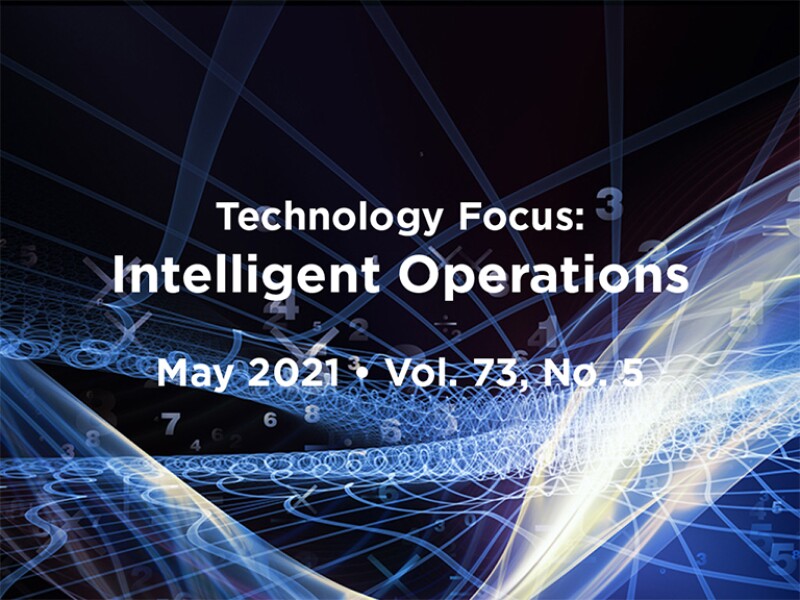The last year has seen people in many sectors unexpectedly confronting a new challenge—working remotely. Even before this, our industry has been trying to operate fields remotely (either partially or fully) and make operations smarter and more automated. Key drivers are to improve safety in operations, maximize production, and make operations more efficient. These efforts have been enabled by the rapidly changing technology landscape—in sophisticated acquisition and analysis of data and increased connectivity (from both fiber-optic and cellular networks). It also has been accelerated by the push across the industry to digitalize. We now acquire, process, and analyze much more detailed operations data and use the analysis to actively control wells and operations.
This feature highlights recently presented papers that cover the following topics.
How Digital Transformation Has Progressed. Paper OTC 30794 discusses similar efforts in other sectors, including marine/ship building and auto manufacturing. Paper SPE 200728 discusses use of a digital twin to improve operational efficiency in a mature brownfield setting (Brage Field in the Norwegian North Sea). Paper OTC 30488 describes extensible and scalable remote monitoring and control using a digital decision assistant.
How Technology Has Enabled Data Acquisition and Analysis From Relatively New Sources [e.g., Distributed Temperature Sensing (DTS) or Distributed Acoustic Sensing]. Paper SPE 200728 describes seven DTS applications from around the world that monitor well integrity, stimulation, and injection profiles and identify gas, water, or sand production. Paper OTC 30442 and other papers from the Bokor field in Malaysia describe DTS data from fiber-optic cable behind casing in wells with smart completions. Papers IPTC 19574 and SPE 202349 show how pressure telemetry can enable wireless control of completions.
The Path to Fully Remotely Operated Fields. Paper SPE 203461 discusses the design and execution of digitalization and remote operations in a new development area with high hydrogen sulfide (the Mender satellite field in the UAE). Paper SPE 202667 describes the applications for multiple autonomous robots controlled remotely.
Digital transformation of work flows and operations clearly is happening across the industry and adding significant value. The next frontier on the digital transformation and Industry 4.0 journey might be to achieve step-change increases in oil and gas recovery factors.
This Month’s Technical Papers
Digital Deployment Lessons From Early Adopters
Study Reviews Advances in Downhole Fiber-Optic Modeling and Analytics
Operator Develops Fully Smart Onshore Field
Recommended Additional Reading
SPE 200728 The Digitalization Journey of the Brage Digital Twin by Peter Kronberger, Wintershall, et al.
OTC 30442 Innovative Solution for IWAG Injection Monitoring Using Fiber-Optic Cable Cemented Behind Casing in an Intelligent Well: A First in Malaysia by Nur Faizah P. Mosar, Schlumberger, et al.
SPE 202667 Operations Room: A Key Component for Upscaling Robotic Solutions on Site by Jean-Michel Munoz, Total, et al.
OTC 30488 Machine-Learning-Enabled Digital Decision Assistant for Remote Operations by Vitor Alves da Cruz Mazzi, Intelie, et al.
IPTC 19574 Research and Application of Downhole Remote Wireless Control Technology Based on Gas Pressure Wave in Tubing by Mingge He, China National Petroleum Corporation, et al.
SPE 202349 Pressure Wave Downhole Communication Technique for Smart Zonal Water Injection by Quanbin Wang, China National Petroleum Corporation, et al.

Keshav Narayanan, SPE, is a principal reservoir engineer with BHP in the Houston office. He has more than 23 years of experience in reservoir management, optimization of reservoir performance, and reserves estimation. Narayanan has worked on a variety of greenfield and brownfield projects in the US, Europe, and the Middle East. He holds a BS degree in chemical engineering from the Indian Institute of Technology, Madras, and an MS degree in petroleum engineering from The University of Texas at Austin. In addition to serving on the JPT Editorial Review Committee, Narayanan also serves on program subcommittees for SPE’s 2021 Annual Technical Conference and Exhibition. He can be reached at www.linkedin.com/in/keshav-narayanan-328576.

